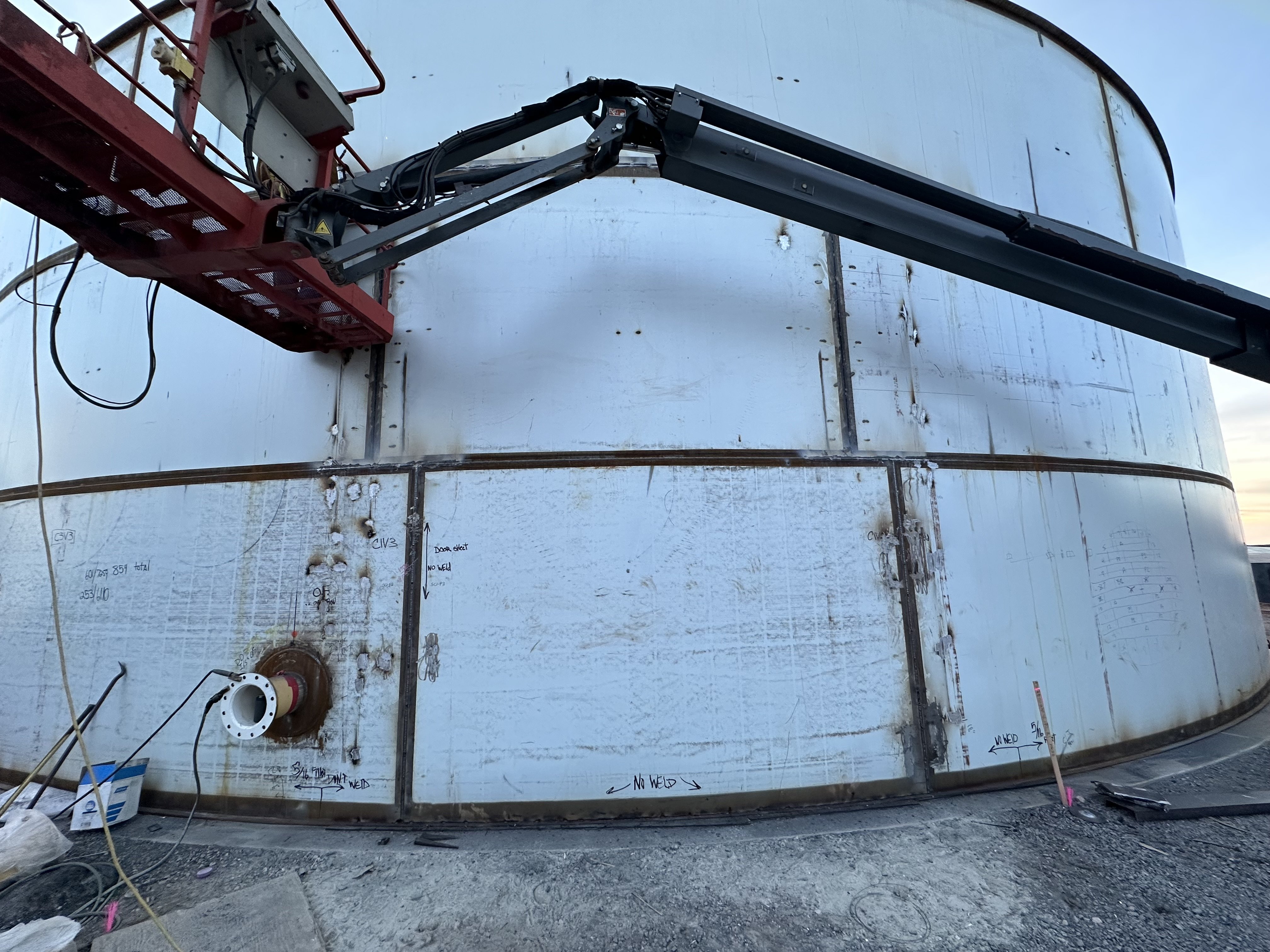A Comprehensive Summary of Storage Tank Welding Examination Specifications and Methodologies for Improved Weld Top Quality and Performance
The value of welding assessment standards in the manufacturing of storage tanks can not be overemphasized, as they function as the backbone for guaranteeing weld honesty and functional dependability. Different assessment techniques, consisting of aesthetic analyses and progressed non-destructive screening approaches, are critical in recognizing prospective imperfections that can jeopardize efficiency. In addition, adhering to regulative requirements not just improves weld quality yet likewise mitigates the danger of expensive failures. As we check out the subtleties of these approaches, it comes to be imperative to consider exactly how an organized approach can revolutionize current methods and lead to substantial renovations in results.
Importance of Welding Evaluation Criteria

Welding inspection requirements incorporate an array of criteria, consisting of material specs, welding procedures, and credentials of workers associated with the welding process. By applying these requirements, organizations can systematically identify and correct possible flaws, therefore lowering the likelihood of costly fixings or disastrous failings. Strenuous examination methods foster a society of responsibility and precision, urging welders to preserve high levels of craftsmanship.

Usual Welding Inspection Techniques


Ultrasonic Testing (UT) is one more common strategy, utilizing high-frequency sound waves to spot interior problems that might not be visible on the surface. This technique is particularly effective for determining spaces or inclusions within the weld steel. Magnetic Bit Testing (MT) is also widely utilized, particularly for ferromagnetic materials, as it exposes surface area and near-surface flaws via the application of electromagnetic fields and ferrous particles.
Furthermore, Liquid Penetrant Screening (PT) finds surface-breaking defects by applying a penetrant to the weld and afterwards utilizing a developer to extract the penetrant. Each of these methods contributes to a detailed evaluation method, making certain that welds satisfy the strict quality criteria called for in tank building.
Governing Criteria and Conformity
Regulatory standards and conformity are essential parts in making sure the security and reliability of welded frameworks in storage tank building - Tank Welding Inspection. These standards offer to establish minimum demands for material homes, welding procedures, and examination practices, therefore decreasing the threat of structural failings and improving general efficiency
Trick organizations, such as the American Society of Mechanical Designers (ASME) and the American Welding Culture (AWS), supply guidelines that are extensively adopted in the sector. Compliance with these requirements not only makes sure adherence to ideal practices however also meets legal and legal commitments, guarding the interests of stakeholders.
Regulative bodies commonly mandate adherence to specific codes, such as ASME Code Area IX for welding qualifications anchor and API 650 for welded containers. These codes lay out requirements for welding techniques, certifications of employees, and testing approaches to verify weld honesty.
Normal audits and assessments are crucial to maintaining conformity, as they help identify variances from established standards. Non-compliance can cause substantial fines, job hold-ups, and safety and security risks. Therefore, a robust understanding of regulatory criteria and a commitment to compliance are vital in achieving premium and sturdy welded storage tank frameworks.
Non-Destructive Examining Approaches
Exactly how can the stability of bonded structures be try this out assured without creating damages? Non-destructive screening (NDT) methods supply a robust remedy, allowing assessors to review weld top quality without compromising the product - Tank Welding Inspection. Among one of the most usual NDT techniques are ultrasonic testing (UT), radiographic testing (RT), magnetic bit screening (MT), and color penetrant testing (PT)
Radiographic screening involves passing X-rays or gamma rays via the weld, creating images that disclose architectural issues such as splits or gaps. This technique is very useful for examining the honesty of complex welds.
Magnetic bit screening is fit for ferromagnetic products, where electromagnetic fields reveal surface and near-surface suspensions. Color penetrant testing uses a liquid color to highlight surface-breaking defects, making it an effective method for non-porous products.
Each of these NDT approaches has unique advantages, permitting extensive evaluations tailored to certain products and welding processes. By executing these techniques, markets can guarantee the integrity and safety and security of bonded structures, ultimately improving overall efficiency.
Enhancing Weld High Quality Via Evaluation
Efficient examination plays an essential role in improving weld top quality, acting as an essential checkpoint in the manufacture procedure. By determining prospective issues early, assessments minimize the danger of endangered structural integrity and ensure compliance with market standards. Using a mix of aesthetic assessments, non-destructive screening (NDT) techniques, and mechanical evaluations, assessors can find issues such as porosity, cracks, and insufficient blend.
Carrying out a durable examination procedure not just boosts the general high quality of welds yet additionally cultivates a society of accountability amongst welders and producers. Normal training and qualification of assessment personnel ensure that they are outfitted with the essential skills to identify and resolve prospective problems properly. This proactive technique lessens rework and linked prices, ultimately contributing to forecast performance.
Additionally, comprehensive paperwork of evaluation findings offers valuable insights into recurring problems, promoting continual renovation in welding methods. By leveraging sophisticated innovations, such as automated ultrasonic screening or digital radiography, weld top quality can be improved with much more specific evaluations. Finally, an extensive assessment procedure a fantastic read is vital in attaining premium welds, making sure safety and security, dependability, and long life in storage tank manufacture.
Conclusion
In final thought, the implementation of strenuous tank welding inspection standards and methods is important for ensuring weld integrity and performance. By utilizing a mix of visual inspections, non-destructive screening methods, and adherence to regulatory criteria, organizations can properly determine and alleviate possible issues.